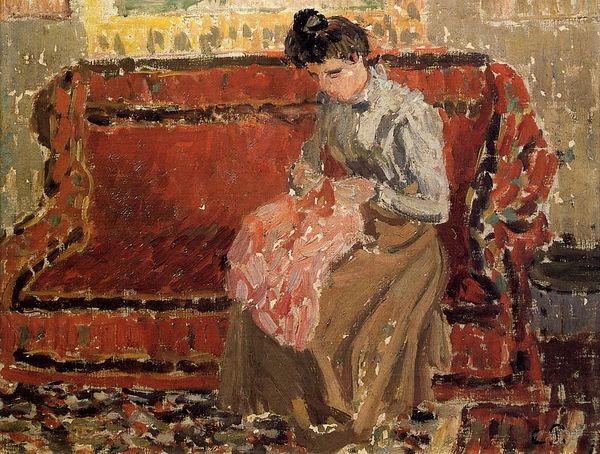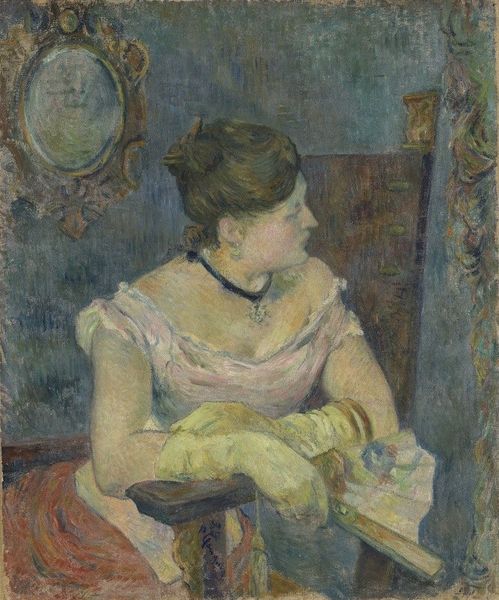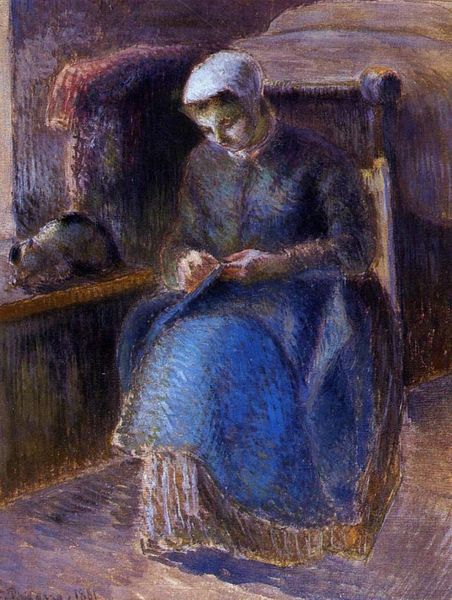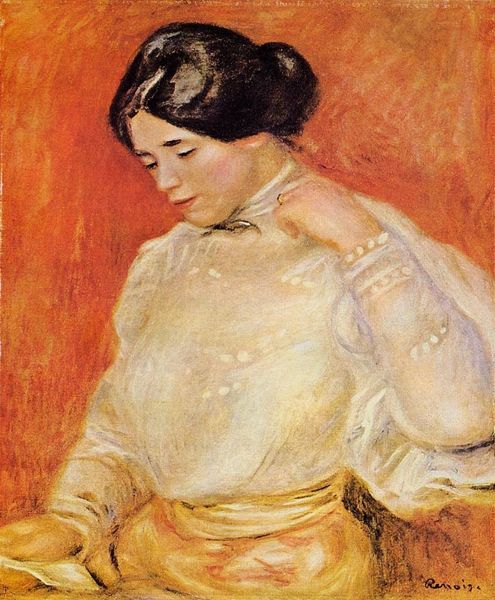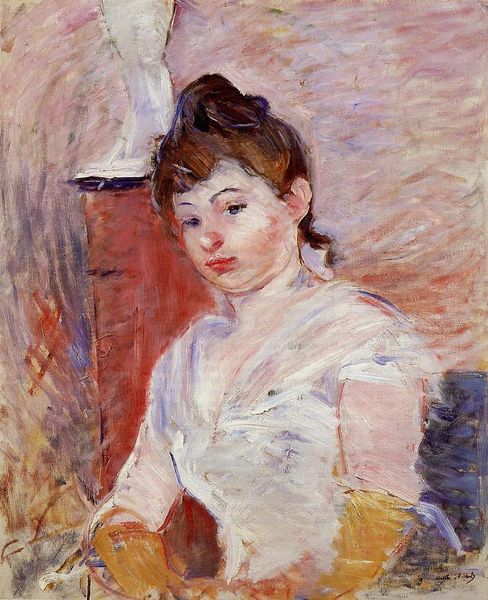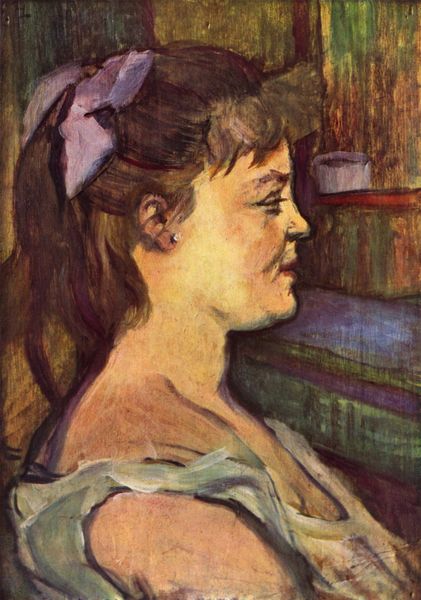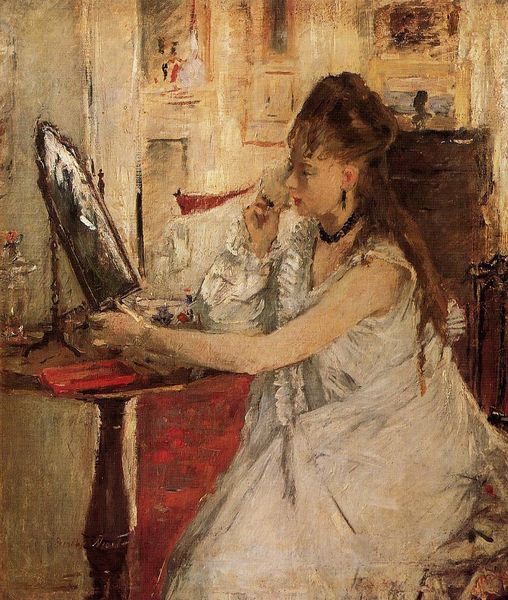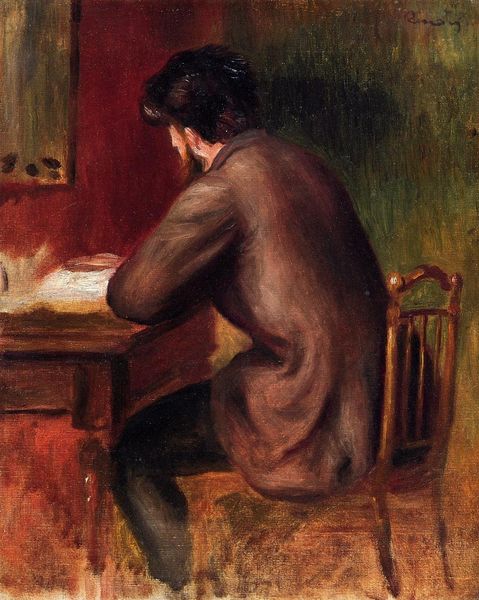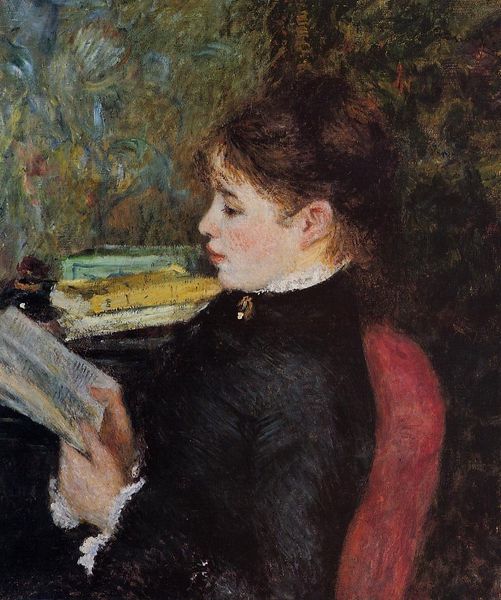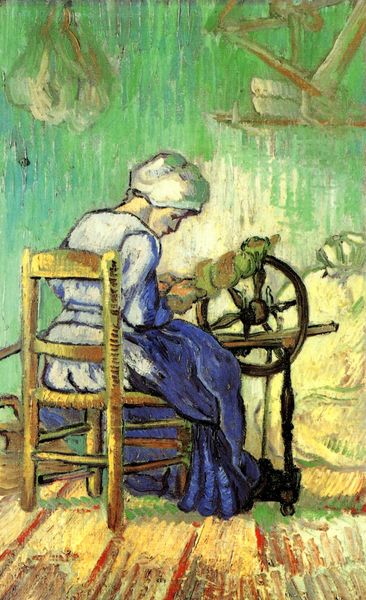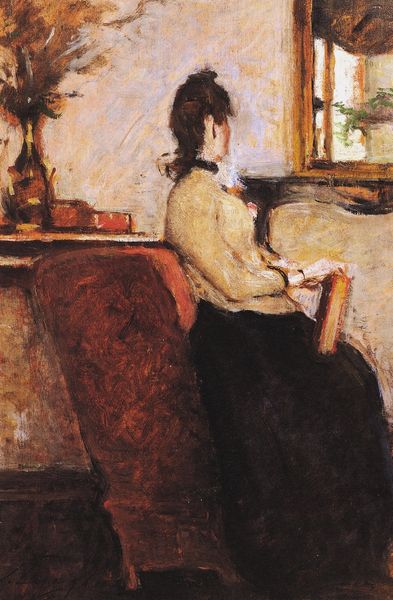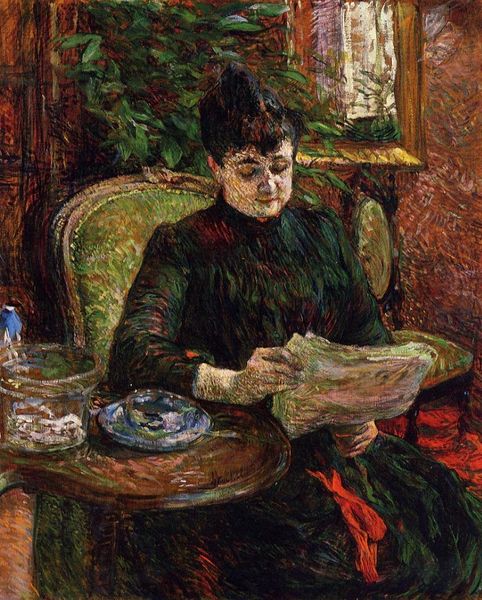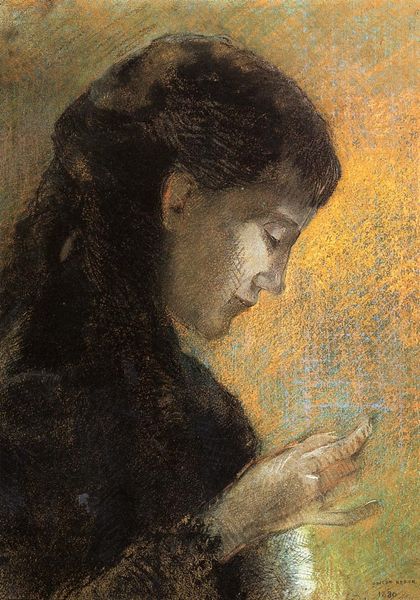
painting, oil-paint
#
portrait
#
painting
#
impressionism
#
oil-paint
#
figuration
#
oil painting
#
genre-painting
#
post-impressionism
Dimensions: 55 x 49 cm
Copyright: Public domain
Curator: Henri de Toulouse-Lautrec's 1886 oil painting, "At Gennelle, Absinthe Drinker," captures a striking figure. What are your initial impressions? Editor: Isolation. The somber browns and the woman's averted gaze create a palpable sense of detachment, almost as if she’s been exiled from society. Curator: That feeling of alienation is effectively conveyed through Lautrec's brushstrokes. Notice the way the texture is built up – short, broken strokes that never quite resolve into a smooth, idealized form. It lends a feeling of instability, of something just slightly askew. Editor: Right, and that imperfection, in a way, humanizes her. We see so many depictions of women from this era painted to become symbols for lust or purity. But here, we get this woman caught in this hazy state, probably struggling. It makes me wonder about the real-life Gennelle and the social forces that landed her here. Curator: The composition draws the eye to her profile. The way she's positioned within the space and the angles created by her arms on the table create diagonals that imply psychological movement—as if we can witness a moment of inner conflict played out across her features. Her averted gaze draws our curiosity and emphasizes an almost introspective narrative, which diverges from mere representation. Editor: Absinthe itself also tells a story. Popular in artistic circles but also associated with addiction and societal decay, especially in depictions of working-class people. This piece invites dialogue between art and social commentary. I wonder how Gennelle found herself sitting in front of Toulouse-Lautrec and how much agency she had at all. Curator: What you say prompts contemplation of the artist’s gaze. Though Gennelle's is averted, it is Lautrec who selects the focus, creating that intimate visual experience for the viewer. It becomes an exercise of observing both the subject's position and the hand of the one choosing how she will be forever represented on the canvas. Editor: This consideration only reminds us that even within art we can find dialogues about gender and class. It goes to show how many perspectives enrich this kind of encounter!
Comments
No comments
Be the first to comment and join the conversation on the ultimate creative platform.
